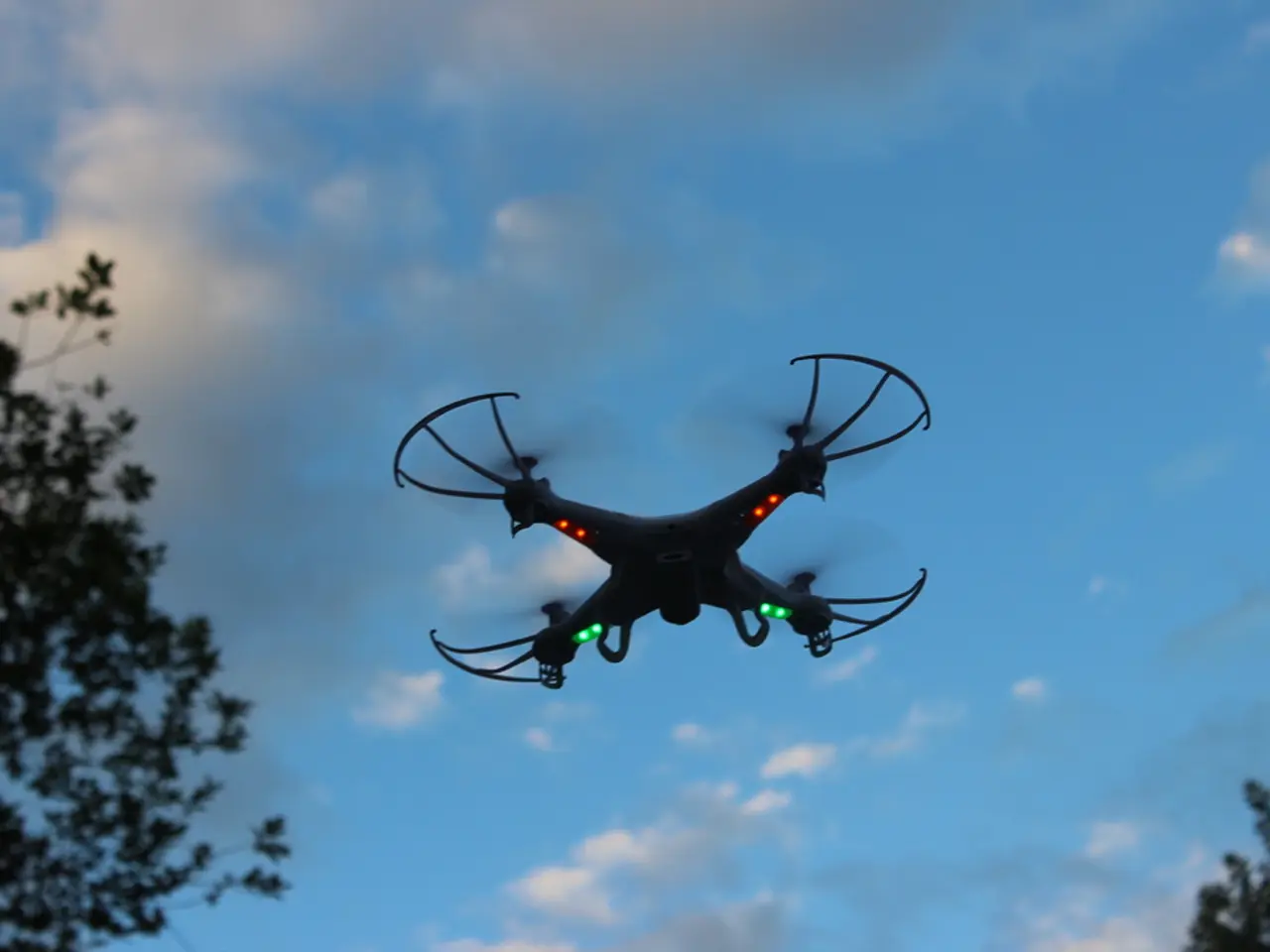Strategies for Identifying Drones at Night: 6 Practical Hints You'll Find Useful
In the ever-evolving world of technology, drones have become a common sight, even in the darkest of nights. To help you navigate this new frontier, here's a comprehensive guide on how to spot drones effectively when the sun goes down.
Visual Signs
The first step is to keep an eye out for small, erratic flying objects. These could be drones, especially if they exhibit blinking or steady LEDs, often in red, green, or white, designed to be visible in the dark. Unusual flight patterns, such as hovering, sudden directional changes, or steady, slow movement, are also indicators.
Thermal cameras can reveal drones by detecting their heat signature, even in complete darkness. Short-Wave Infrared (SWIR) cameras also offer robust day/night detection by sensing infrared emissions.
Sound Cues
Drones typically emit a characteristic buzzing or whirring sound from their rotors. This sound can be subtle but distinctive when ambient noise is low. Advanced acoustic sensors or microphone arrays can detect and localize drone rotor sounds at night over some distance.
Technology Tools for Night Drone Detection
Modern counter-drone radars are specialized to detect small, low-flying drones in 360° coverage and operate reliably at night and through weather conditions. They provide early warning and can track multiple drones simultaneously at ranges of several kilometers.
Event-based and thermal cameras excel in low-light by detecting motion asynchronously, reducing motion blur and static background noise, allowing reliable drone detection and tracking in challenging lighting. Thermal and SWIR cameras enhance visibility by detecting drones via heat signatures that are independent of illumination.
AI-enhanced image processing models improve detection accuracy in low-light environments by adjusting for noise and brightness while maintaining real-time processing. Multispectral methods combining visible, infrared, and radar data further improve detection confidence in low-light and adverse weather conditions.
Staying Legal While Flying at Night
As of April 6, 2021, the Federal Aviation Administration (FAA) has updated its drone rules, allowing people to fly drones at night without special permits, as long as each drone carries clear anti-collision lighting. Keeping up with current FAA drone guidelines helps you stay legal while flying at night.
Practical Tools for Night Drone Detection
Binoculars give a big edge in finding drones at night, sharpening distant drone lights and helping confirm sightings through clear and unique blinking patterns. Parabolic microphones capture and concentrate sound waves onto one precise spot, separating drone buzz from background sounds.
Telescopes can reveal impressive details of drones, such as FAA-required LED lights or flashing strobes, but their narrow viewing angle makes tracking speedy drones tough. Drones move differently than planes, birds, or shooting stars, often hovering steadily or making quick, sharp turns that no natural flyer ever could.
Grab helpful tools like binoculars, thermal cameras, radar detectors, or parabolic microphones to spot drones quicker in low-light conditions. Drone detection apps use RF sensors to search for drone signals across ranges from 1 to 10 miles, and portable radar systems are now available, connecting wirelessly to your home network and delivering instant alerts direct to your smartphone.
In summary, spotting drones at night relies on combining perceptible visual and audio indicators with advanced sensors—radar, infrared, thermal, and event-based cameras—plus AI-powered detection algorithms that overcome low illumination challenges. With this guide, you're now better equipped to navigate the night sky and keep a watchful eye on the drones that share it with us.
[1] https://www.researchgate.net/publication/345936481_A_Survey_on_Low-Light_Vision_and_Computer_Vision_for_Night_Drone_Detection [2] https://www.sciencedirect.com/science/article/pii/S1568494618309643 [3] https://arxiv.org/abs/2004.07767 [4] https://www.mdpi.com/2072-4292/11/12/2397 [5] https://ieeexplore.ieee.org/abstract/document/8970754
- The blinking or steady LEDs on small, erratic flying objects could indicate they are drones, even in the dark, especially if they are red, green, or white.
- Thermal cameras can detect drones by revealing their heat signature in complete darkness, while short-wave infrared (SWIR) cameras offer day/night detection.
- Modern counter-drone radars specialize in detecting small, low-flying drones in various conditions, providing early warning and tracking multiple drones simultaneously.
- AI-enhanced image processing models improve detection accuracy in low-light environments and maintain real-time processing, further increasing reliability.
- Practical tools for night drone detection include binoculars, parabolic microphones, telescopes, drone detection apps, and portable radar systems that deliver instant alerts to smartphones.




